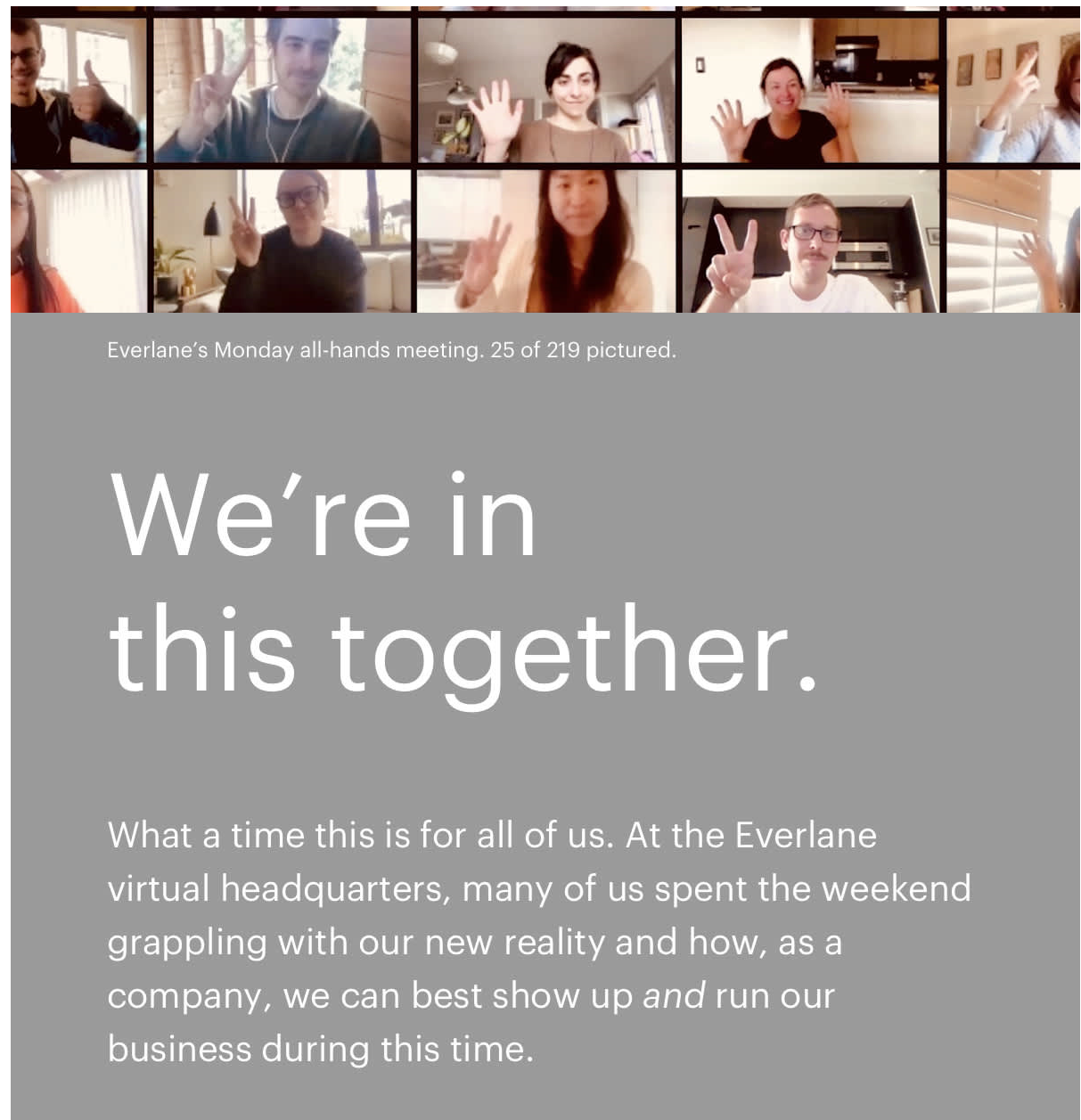There is a feeling of panic. The messaging is non-stop from the news media as well as the retailers. Shopping behavior that only a week or so ago seemed like a non-issue finds shoppers receiving responses like no delivery or pickup times available. Consumers are flocking to the stores, at least grocery stores and mass merchants like Target, Walmart and Costco. In some stores, shelves are empty, and it’s challenging to know what to do first. I wanted to make a batch of spaghetti over the weekend and made four trips to different stores only to come up short on a yellow onion. At least Trader Joe’s came through.
It is difficult to focus, and many of us are ordering more than we need. As shoppers rush to buy local, they are clearly also taking advantage of omnichannel options provided by retail stores. The foundation of omnichannel is inventory, which is certainly challenging. Shoppers are asking themselves four basic questions and retailers must be in a position to respond.
- Is it in stock?
- Where is it available?
- What is the most convenient location?
- How fast can I get it?
Over the past few days, I have placed several orders at Target. One came back with no inventory once the order was being picked while the other three went through the system. Another experience was shared by a coworker who was in need of asthma medication for a child: After having the order confirmed, she ultimately received an email that the product was no longer available. This may be the new normal.
Despite issues with in-stock items, my store pickups were smooth. During my Chicago pickup visit on March 16, I spent time chatting with the BOPIS team in-store. They said that weekday volume was more like a typical Saturday, but they were managing. The only challenge one associate alluded to was handling aggravated customers when inventory was inaccurate and communication forthcoming that the order was confirmed and being processed when in fact subsequent alerts would indicate otherwise. In a similar vein, another coworker picked up at a suburban Target location, and associates there said they were receiving 10 times their normal volume. They said they had to turn off the system to catch up.
Earlier this year, Digital Commerce 360 and Bizrate Insights surveyed 1,000 online shoppers in which omnichannel behavior was already an integral part of their online shopping.
A quick review of the findings suggests that 78% of online shoppers are omnichannel active with behavior as follows:
-
- 54% of online shoppers checked inventory at nearby stores
- 41% of online shoppers took advantage of BOPIS
- 24% ordered online for same-day delivery from a web-only retailer such as Amazon.com or Overstock
Mobile in many ways fuels omnichannel activities even more, and a few stats from our research showed the status before COVID-19:
- 45% have used a mobile app to buy a product
- 30% had used a mobile app to locate a product in-store
- 17% are making purchase on their phones while in-store
We also would expect that all will see greater adoption in the weeks and months to come.
A few thoughts relative to these findings is that our cars will become safe havens for shopping. Mobile devices will be used to locate product before heading to stores, while in stores to make purchases and to enhance our efficiency during these chaotic times.
One can only assume that these numbers have accelerated under COVID-19. We are in the process of tracking these same activities and will keep you abreast of this data.
Five digital trends in a COVID-19 world
I want to touch on five elements of omnichannel and store-related circumstances that are coming to light.
- Availability is compromised
This may be the most challenging area as stock is low, supply chains are challenged and shoppers are living in fear. Retailers must make more of a concerted effort to maintain accurate inventory or risk disappointing their customers. It’s less frustrating for shoppers to be told an item is not available at the outset rather than afterwards, as they may assume their order is 100% foolproof as it always has been in the past. Otherwise, they will have filled their carts only to find no pickup and delivery options available as I did with Walmart.
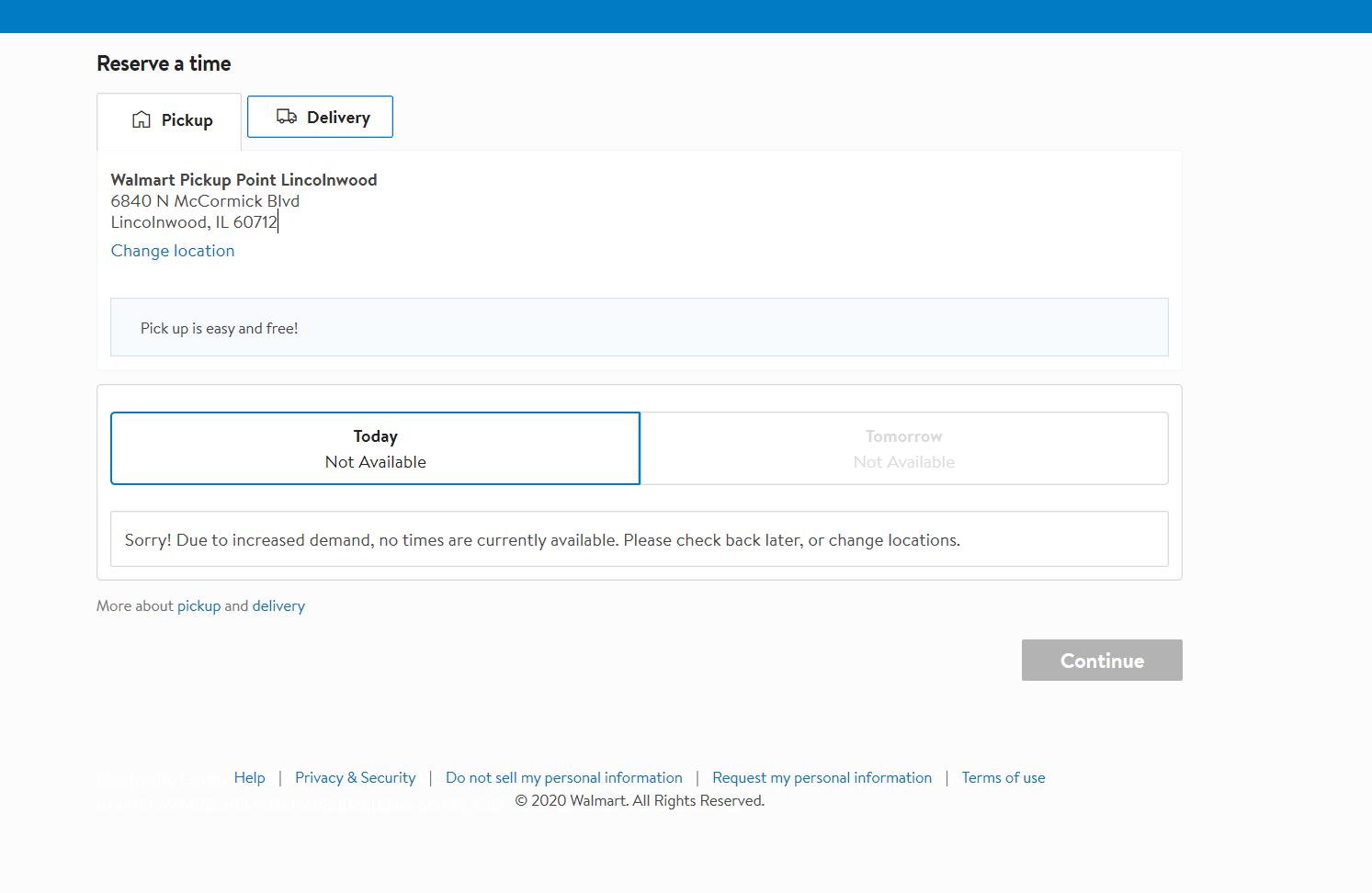
While Jewel and most grocery stores are in desperate straits, the “Thank you for your patience” message may help keep aggravation to a minimum. The doors in my neighborhood show reduced hours—now open 6 a.m.-10 p.m. rather than 24 hours. On a side note, as I walked home, I spoke to one of the delivery drivers on the front lines. He said that, while he typically does 200 deliveries per day, they have been reduced to about 85 given out of stocks and supply challenges facing grocery stores. I asked if he feared for his job, and he said delivery was the future.
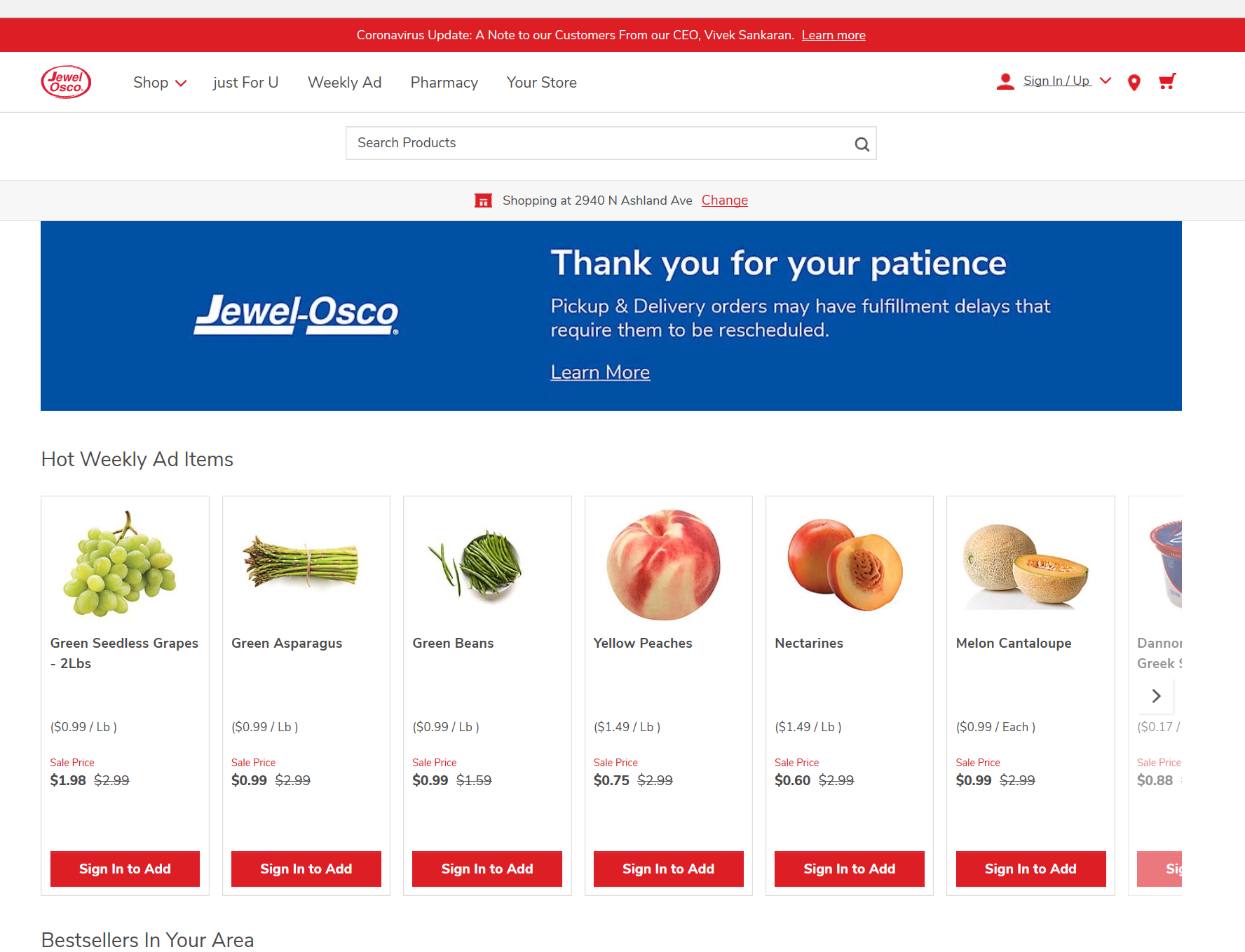
- Making smart communication choices
This is a time retailers must absolutely get communication right. Customers are living on the edge, and both onsite and email communication should be ratcheted up to address these dynamics. Costco’s onsite messaging let me know that they will attempt to meet delivery promises. They do caution that they apologize in advance for late deliveries, which are certainly going to happen under these circumstances. This type of approach is clear and candid and sets realistic expectations for consumers.
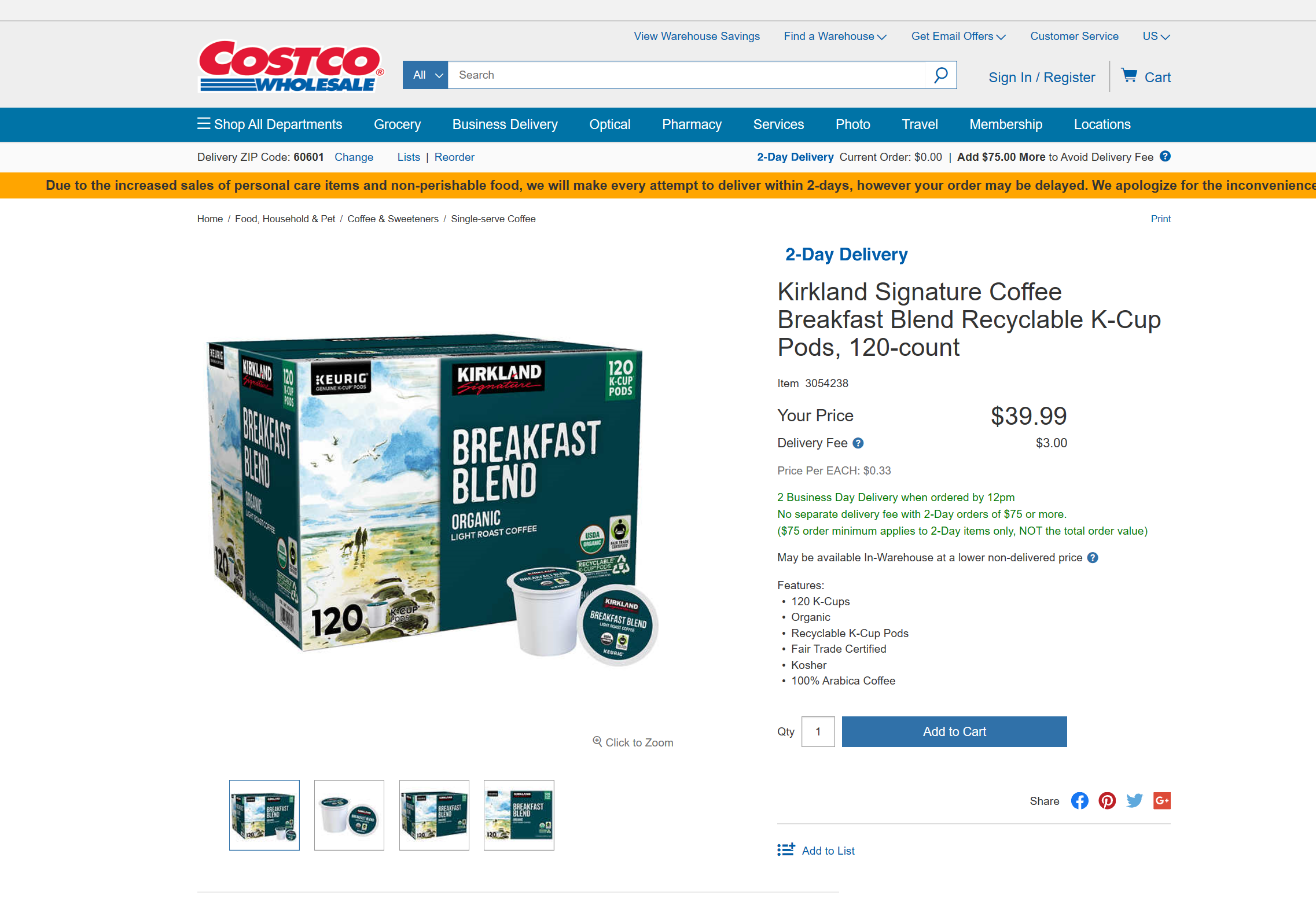
- Store survival in play
Large retailers have a multitude of resources to confront viability. Alternatively, smaller retailers are testing a myriad of solutions to stay afloat.
Sometimes humor goes a long way, and this was certainly the case with the email a friend shared from Elements, a high-end Chicago boutique. As I have always found, shopping can be therapeutic. They also suggest turning to social media and taking advantage of virtual shopping.

- Changing customer needs can be addressed
Office Depot knows that many of our kids are at home utilizing e-learning. The office supplies retailer has put together bundles to help parents get through this crisis. The retailer ends its email by letting shoppers know its stores are open. With one within walking distance from my house, I placed a BOPIS order for printer ink not knowing the fate and timing of delivery vehicles. A sure thing seems so much more important in these trying times. When I arrived at the store, there were a few customers mulling about and in-store signage reflected work from home point of sale. The associate who checked me out shared that in-store pickup levels are similar to prior weeks, but that store purchases of tables and chairs to set up home offices are peaking. When I questioned if the stores would remain open, the associate suggested that they had not heard otherwise.
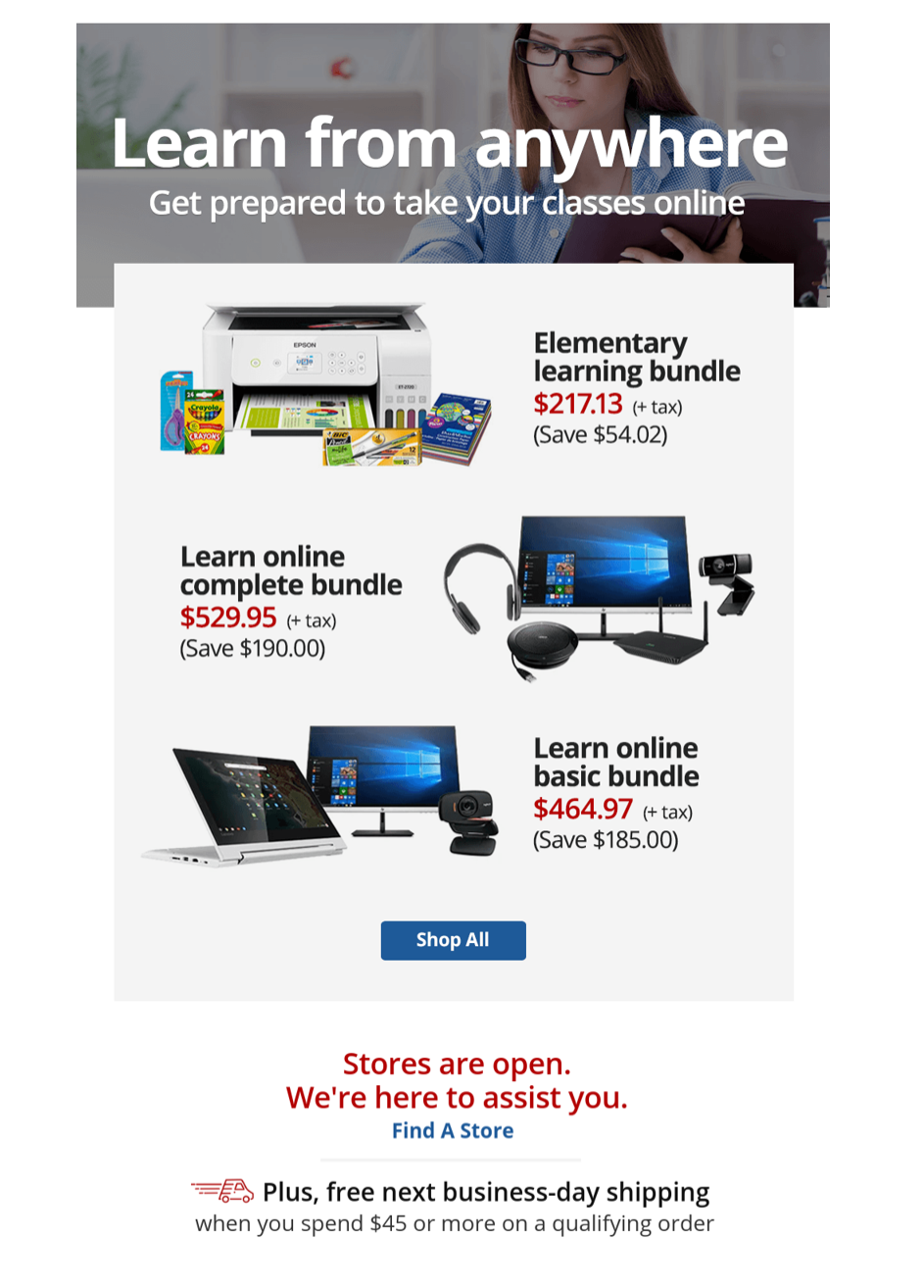
- Show the shopper some love
Over the past few days, retailers are beginning to express their concerns by closing stores and messaging their customers. Though many of us aren’t in a spending mode, some retailers are extending promotions to spur their own businesses and the economy. Hopefully this will help with some of the financial challenges all of us will be facing in the near team. For example, Everlane is sharing $50 best-selling denim styles. And just this morning, I also received an email from BraSmyth, offering 20% off during these turbulent times. More will certainly be on the way.
We are all in this together
We are living in uncharted times and that means testing creative solutions to the toughest of problems. Shoppers are ready, and retailers must meet them with compelling omnichannel solutions and prices that push them to buy. At the same time, all of us need to be compassionate and caring for associates, drivers and those who stock the shelves where we shop.
